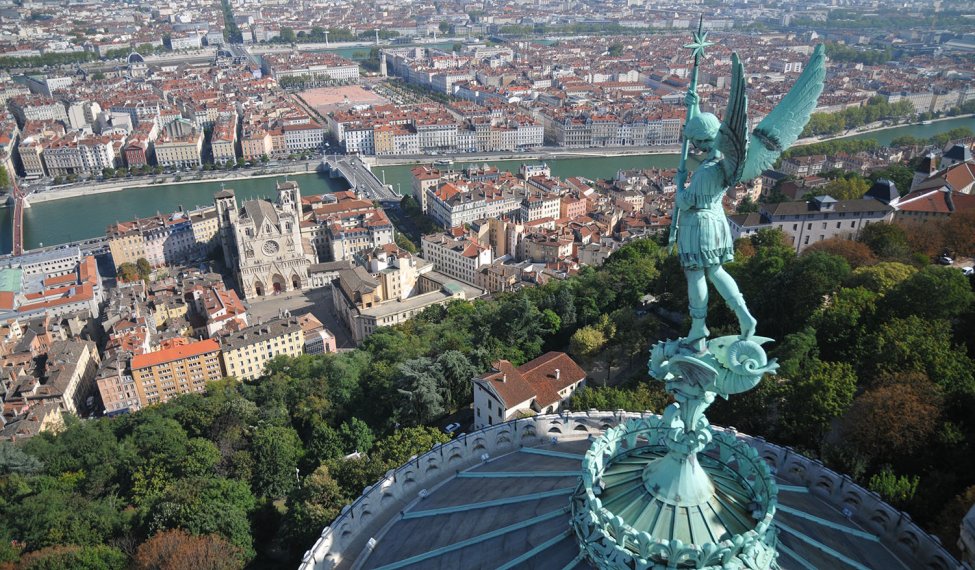Lyon, classified as a UNESCO World Heritage Site
A visit to Lyon should start with the Fourvière Hill. From our self-catering apartment, it is very closed. Take the furnicular railway or go by foot up the series of steps from the old town, but before visiting its basilica and museums, pause for a moment to get your bearings by taking in the wonderful panoramic view from the top of the hill. On a clear day the view is breathtaking, especially in the summer time, but whatever the season, Lyon is laid out before you in all its glory. With luck, it should be possible to see the Alps and Mont Blanc on the horizon.
The photo below helps to understand why the Historic Site of Lyon was added to the UNESCO World Heritage List of cultural sites in 1998.

The photo below helps to understand why the Historic Site of Lyon was added to the UNESCO World Heritage List of cultural sites in 1998.
In the front of the photo stands the Fourvière hill. The word « Fourvière » originates from "Forum Vetus", which means “old market” or “old square”, and it was here that the Forum of the original Roman settlement was situated. The Amphitheatre and the Odeon stand as testimony to Ancient Lyon.
At the foot of the hill we can see the Vieux-Lyon district. The Saint Jean cathedral, built between the C12th and the beginning of the C15 th, contains fine examples of Gothic and Romanesque architecture. The cobbled narrow roads and buildings with mullioned windows and roman tiled roofs all bear witness to the Renaissance period.
Between the Saône and the Rhône lies the Presqu’île. During town planning in the C18th and C19th, the buidings grew taller and interlocking “mechanical” roofing tiles were introduced. Windows were enlarged and the streets became straighter and wider.
In the background, behind the Rhône, lies the Part-Dieu district where the Oxygene tower and the Crédit Lyonnais tower are signs of C20th industrialisation and modernisation. During this period roads were widened further to allow room for the increased road traffic and to allow access to the industrial zone of Lyon.
Take a journey across Lyon and travel through 2,000 years of history!